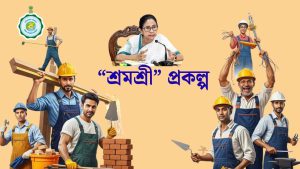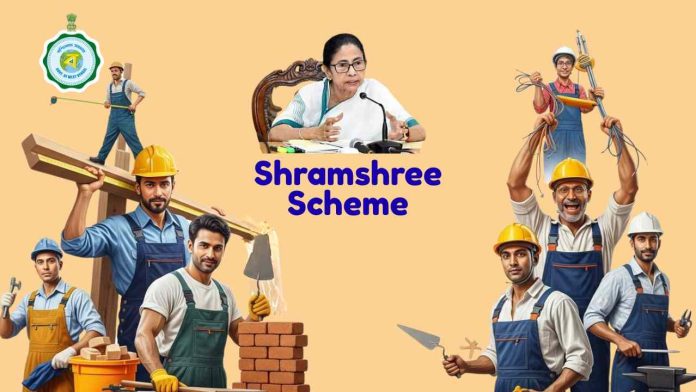Synopsis: The Shramshree scheme takes centre stage in Bengal politics as Mamata Banerjee promises cash aid for returning labourers. But is it genuine relief or just another election stunt?
By Dr Mohammad Farooque | Qalam Times News Network |
Kolkata | August 30, 2025
Shramshree in the Spotlight

Shramshree has suddenly become the buzzword of Bengal’s politics. Chief Minister Mamata Banerjee has unveiled this new welfare scheme aimed at luring back displaced labourers. But beyond the headlines, the plan looks suspiciously like another election gimmick—echoing the hollow promises of earlier years.
Official data reveals that 2,730 Bengali-speaking families were recently forced to return home after facing harassment, detention, and branding as “illegal infiltrators” in other Indian states. For them, Shramshree is being paraded as a lifeline. Yet, the reality remains unchanged—being Bengali often makes one a target of humiliation and violence in cities like Delhi, Mumbai, and Ahmedabad.
What Shramshree Really Offers
Under Shramshree, the government promises each returnee ₹5,000 as a one-time grant and an additional ₹5,000 monthly for a year. The question is simple: why would a labourer, who migrates for survival, abandon higher wages in Delhi or Gujarat for such token sums? People don’t leave home for charity; they leave because their state fails to provide food, jobs, and dignity.
Bengal’s economy is faltering. Industrial activity has stalled, wages are abysmally low, and employment opportunities are scarce. In such a climate, Shramshree seems less like relief and more like a bribe for votes—a scheme destined for irrelevance after the elections.
A Pattern of Broken Schemes
History offers a warning. During the COVID-19 lockdown, about 40 lakh labourers returned to Bengal. The state promised rehabilitation, even creating a Migrant Welfare Board. But in practice, only 22 lakh were registered; the rest were forgotten. If the government couldn’t track its own people, can Shramshree deliver anything substantial now?
Language, Identity, and the Politics of Shramshree

The tragedy runs deeper. India’s pluralism is under assault as Bengali-speaking labourers face hostility outside their state. In BJP-ruled “double engine” states, they are branded outsiders and attacked. Courts have flagged this discrimination, but the Union government remains apathetic.
For Mamata Banerjee, Shramshree offers a convenient platform to stage protests and claim moral high ground. But slogans and schemes cannot substitute for genuine job creation and industrial revival.
Shramshree vs. Reality
At its core, Shramshree does not address the migrant crisis. The real need is dignity, fair wages, and stable employment—not temporary stipends dressed as welfare.
The irony is bitter: while one side demonises Bengali workers as infiltrators, Mamata repackages their misery as Shramshree for electoral gain. Between the two, the worker’s plight remains unchanged—rootless, exploited, and invisible.
And that remains Bengal’s unhealed wound.







